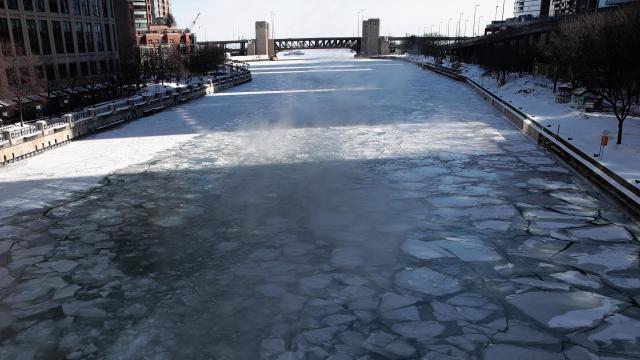Temperatures across the United States plummeted today, with parts of the Midwest experiencing wind chills of 40 degrees below zero — and that’s in Celsius. As if frozen pipes and frostbite weren’t dangerous enough, some folks are learning about one of the rarer, scarier side effects of super-cold weather: cryoseisms, or “frost quakes.”
While we won’t be facing weather like this anytime soon, it is still important to understand what the extremes of weather can mean.
A cryoseism occurs when an area of land that’s been saturated with water experiences a very sudden drop from above-freezing to subzero temperatures. This drastic temperature change causes the groundwater to freeze — and therefore expand — so suddenly that its surroundings can’t shift to accommodate it, causing pressure to build under the surface.
The pressure continues to build until the rocks and dirt can’t take it anymore and, well, explode, usually with a startlingly loud crack or boom. It’s less scary than it sounds: unlike the earthquakes they’re often mistaken for, cryoseisms are very localised and relatively low-energy. Unless you’re right on top of the epicentre, the noises are the worst of it.
Frost quakes have already been reported in Illinois, Indiana, and Pennsylvania; with the forecast promising even colder temperatures tomorrow, it’s likely that more are on the way.
If you hear any loud cracking noises, try not to panic. After all, it’s not the end of the world — the ground is just cold enough to explode.

Comments
2 responses to “What Are ‘Frost Quakes’? ”
fun fact. -40 in Celsius, is the same as -40 in Fahrenheit.
Would also be minus 40 Fahrenheit.